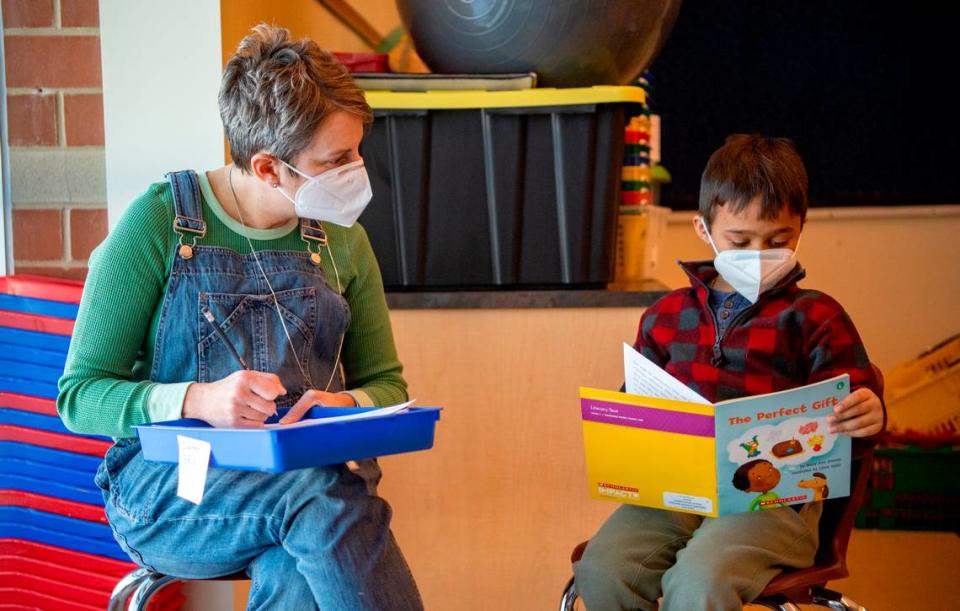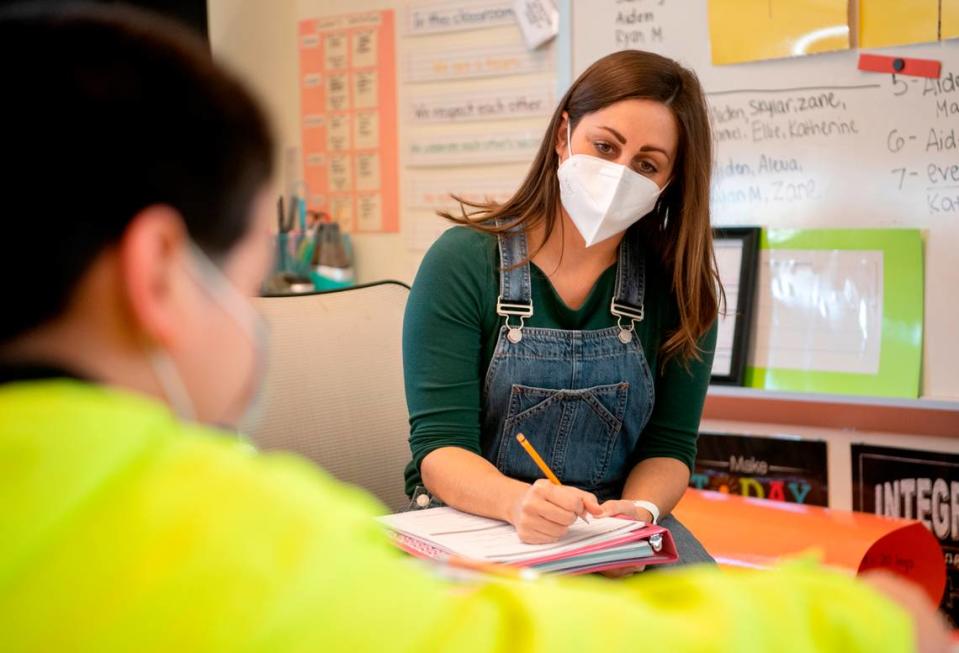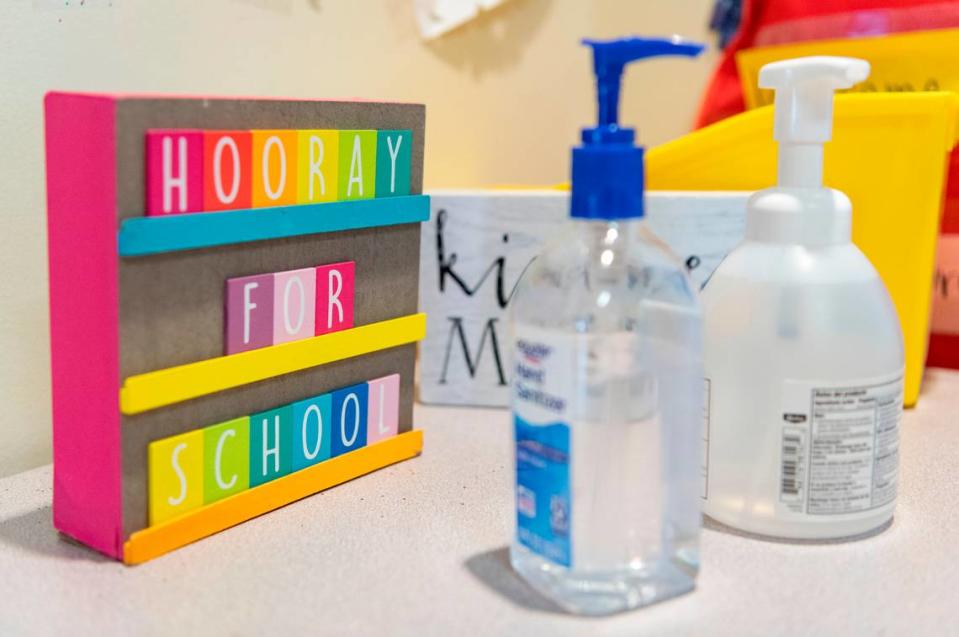How Centre County school districts are adapting as omicron challenges in-person learning
Unlike last school year, Centre County school districts have avoided a shift to remote learning, and despite the rise of COVID-19 cases, they plan to keep it that way.
Due to the highly contagious omicron variant, cases have surged across the U.S., across Pennsylvania, and in Centre County, which continues to see pandemic-high case totals.
Local schools are not isolated from the trend. State College Area School District has seen daily case numbers consistently in the double digits since January, according to its COVID-19 dashboard, a distinct change from the first three months of the school year when the district rarely reached more than five cases per day.
Despite the increase in cases, SCASD has no plans to switch to remote learning at this time, something supported by its health and safety team.
“I feel like the risk to kids’ health of being out of school far outweighs the risks of them being in school,” Allyson Huggins, a doctor at Mount Nittany Health, told the SCASD board at its Jan. 10 meeting.
SCASD is focusing on safety measures to keep transmissions down at schools.
“I do think at the moment we’ve taken on and maintained a really strong level of mitigating measures, masking and distancing wherever possible and a really conservative stance toward isolation and quarantine to try and limit the potential spread,” Matt Ferrari, director of Penn State’s Center for Infectious Disease Dynamics, said at the same board meeting.

School districts across the county have been updating their health and safety policies to reflect the spike in cases as well as the Centers for Disease Control and Prevention’s new contact tracing guidelines. The districts all have the same goal — to keep students learning in-person in another year of the pandemic.
“There is no doubt, the pandemic has taken a toll on the mental health of many of our students and employees. Based on our experience and the advice of our health and safety team professionals, being in schools overwhelmingly supports the mental, social and physical well-being of students,” SCASD Superintendent Bob O’Donnell wrote to parents earlier this month.
New CDC rules
The CDC updated its guidelines in late December for those who test positive for COVID-19 or are exposed. In schools, unvaccinated or un-boosted students or staff who came within close contact with a positive case should quarantine for five days, watch for symptoms and wear a mask for five days after exiting quarantine. Masked and distanced K-12 students are an exception to the guidelines and do not have to isolate.
For those who have been vaccinated or contracted COVID-19 in the last 90 days and were exposed, no quarantine is needed unless symptoms develop, but the CDC recommends wearing a mask for 10 days.
With isolation requirements differing based on masking, vaccination status, and symptoms, contact tracing is more complex than ever.
To deal with the rise in cases and the emphasis on contact tracing, Penns Valley Area School District is relying on help from parents.
“We changed how we went about it,” Nate Althouse, community relations director for the district, said. “It was really put a push or an emphasis on parents being attentive to their kids’ health, and then really asking for their help in monitoring the symptoms of kids and not sending kids who are symptomatic to schools.”
The Bellefonte Area School District is also relying on parents to help lower transmission rates and ease the burden of contact tracing for staff.
“We’re begging parents to keep your kids home if they’re sick, we’re being very, very flexible with attendance policies so that no one feels like they have to send their kids to school,” Karen Krisch, principal at Marion-Walker Elementary and the district’s pandemic coordinator, said.
Krisch added that most cases come from contact with positive family members rather than transmission between students in school.
“So if one person in the family gets it, everyone’s getting it more so than there’s two kids positive in the class and now the whole class is going down,” Krisch said. “That’s not really what we’re seeing. We’re seeing families go down versus classrooms go down.”
Will mandatory masking come back?
State College is requiring masks and is encouraging students to wear surgical or KN95 masks. Surgical masks are available to all K-12 students at each building, and SCASD is set to receive 20,000 adult-sized and 5,000 child-sized KN95 masks, which offer better protection against the virus, for nurses to distribute to high-risk students. Since Jan. 1, 702 SCASD employees have received five masks each, at their request, according to Chris Rosenblum, the district’s director of communications.

Philipsburg-Osceola School District implemented a mask mandate Jan. 10 in response to the rise in COVID-19 cases and students sick with the flu or common cold.
“If I can prevent COVID and if I can prevent the flu a little bit, so be it,” Superintendent Gregg Paladina said on a Jan. 24. “We’re doing the best we can to keep kids in schools.”
Penns Valley Area School District does not have plans to return to mandatory mask-wearing, Althouse said. But if cases rise to a point where remote learning might be necessary, the district will be in contact with the Pennsylvania Department of Education.
Bellefonte is also considering mask mandates as a last measure to keep schools open if cases rise.
“If we get to a point where we might have to shut down schools because we have so many cases, we will probably put a mask mandate in place,” Krisch said. “But ... we’re trying to do other mitigation things.”
Masks are required on all school buses due to a federal rule.
Burdens on staff
Bellefonte’s principles have been bearing the brunt of contact tracing, said Krisch, who estimated that 50% of her time is spent on contact tracing. If cases are high, it can be 100% of her day.
At Penns Valley, secretaries and nurses have been instrumental to the contact tracing efforts and take on the majority of the responsibilities for contacting families and staff, Althouse said.
“You don’t think that you can ask more people,” he said. “But this latest surge, I mean Marvel should be making superhero movies about them. They should be in the Marvel Cinematic Universe for what they’ve been able to do.”
Bald Eagle School District is also monitoring how the rise in cases could affect staffing.
“If we would have a shortage of teachers or other staff members due to testing positive for COVID-19, there is always a chance we would need to temporarily close a school or schools depending on the circumstances and go to virtual learning,” Superintendent Scott Graham wrote in a letter to parents Dec. 13.


